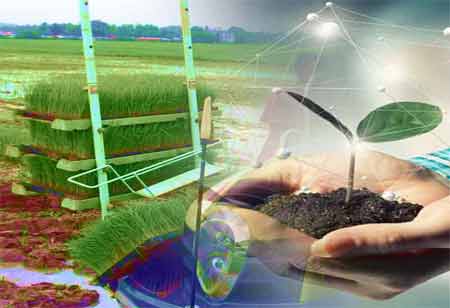Thank you for Subscribing to Agri Business Review Weekly Brief
Advanced Strategies for Fertilizer Management in Cotton Yield Optimization

By
Agri Business Review | Friday, June 21, 2024
Stay ahead of the industry with exclusive feature stories on the top companies, expert insights and the latest news delivered straight to your inbox. Subscribe today.
Advanced fertilizer management strategies optimize cotton yield by balancing nutrient application, leveraging technology for precise dosing, timing, and soil health monitoring, ensuring sustainable productivity and profitability in cotton cultivation.
FREMONT, CA: Cotton cultivation is a vital component of global agriculture, serving as a primary source of textiles and a significant economic driver for numerous countries. Advanced strategies for fertilizer management have emerged as crucial in the quest for optimized cotton yields.
The Significance of Balanced Fertilization and Soil Analysis For Fertilizer Management
Balanced fertilization is critical for efficient cotton nutrient management, ensuring optimal plant nutrition and output. Properly calibrated fertilization procedures help to maintain soil fertility, encourage vigorous plant growth, and increase yield potential. Growers can achieve sustainable cotton output by giving the correct nutrients in the right amounts at the right times. Soil analysis is vital in creating an effective cotton fertilizer management plan. It provides critical information regarding soil nutrient levels, pH, and other qualities, allowing growers to decide about fertilizer selection and application rates. Understanding the nutritional state of the soil will enable farmers to optimize fertilizer use, avoid over-application, and reduce nutrient imbalances, resulting in increased crop health and output.
Soil testing, precision agriculture, and balanced fertilization are all practices that help to maximize nutrient use efficiency while minimizing excess nutrient administration. Growers can limit nitrogen run-off, leaching, and volatilization by matching fertilizer rates to crop requirements and employing advanced application techniques. This also helps to prevent environmental contamination and preserve water quality.
Regularly assessing plant health and soil nutrient levels is paramount for efficient fertilizer management throughout the growth cycle. Observing indicators such as plant vigor, leaf color and growth patterns provides valuable insights into potential nutrient deficiencies or excesses. Furthermore, conducting periodic soil tests in cotton fields aids in assessing soil nutrient availability and identifying any deficiencies or imbalances that may arise.
Optimal Methods for Organic Fertilizer Application
Selecting and sourcing organic fertilizer is essential, considering nutrient content, quality and compatibility with soil and crop needs. Efficient distribution and uptake of nutrients by cotton plants can be achieved by incorporating organic fertilizers into the soil during land preparation or applying them as top dressing throughout the growing season. To optimize nutrient availability and utilization, it's essential to time these applications coincide with periods of peak nutrient demand and favorable weather conditions.
By integrating these techniques and technologies, farmers can enhance nutrient utilization efficiency, minimize environmental impact and promote long-term agricultural viability. As the global demand for cotton continues to rise, embracing these advanced strategies is necessary and a pathway towards ensuring food security, environmental sustainability, and economic prosperity for future generations.





